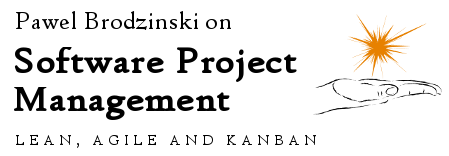There’s one observation that I pretty much always bring to the table when I discuss the rates for our work at Lunar Logic. The following is true whenever we are buying anything, but when it comes to buying services the effect is magnified. A discussion about the price in isolation is a wrong discussion to have.
What we should be discussing instead is value for money. How much value I get for what I pay. In a product development context, the discussion is interesting because value is not provided simply by adding more features. If it was true, if the following dynamics worked—the more features the better the product—we could distill the discussion down to efficient development.
For anyone with just a little bit of experience in product development such an approach would sound utterly dumb.
Customers who will use a product don’t want to have more features or more lines of code but they want their problem to be solved. The ultimate value is in understanding the problem and providing solutions that effectively address it.
Less is more mantra has been heard for years. But it’s not necessarily about minimalism, but more about understanding the business hypothesis, the context, the customer and the problem and proposing a solution that works. Sometimes it will be “less is more”. Sometimes the outcome will be quite stuffed. Almost always the best solution will be different that the one envisioned at the beginning.
I sometimes use a very simple, and not completely made up, example. Let’s assume you talk to a team that is twice as expensive as your reference team. They will, however, guide you through the product development process, so that they’ll end up building only one third of the initial scope. It will be enough to validate, or more likely invalidate, your initial business hypothesis. Which team is ultimately cheaper?
They first team is not cheaper if you take into account the cost of developing an average feature. Feature development is, however, neither the only nor the most important outcome they produce. Looking from that perspective the whole equation looks very differently, doesn’t it?
This is a way of showing that in every deal we trade different currencies. Most typically, but not necessarily so, one of these currencies is money. We already touched two more: functionality or features and validation of business hypothesis. We could go further: code quality, maintainability, scalability, and so on and so forth.
Now, it doesn’t mean that all these currencies are equally important. In fact, to stick with the example I already used, rapid validation of business hypothesis can be of little value for a client who just needs to replace an old app with a new one, that is based on the same, proven business model.
In other words in different situation different currencies will bear different value for a purchasing party.
The same is true for the other side of the deal. It may cost us differently to provide a client scalable application than to build a high quality code. This would be a function of skills and experience that we have available at the company.
The analogy goes even further than that. We can pick any currency and look how much each party values that currency. The perception of value will be different. It will be different even if we are talking about the meta currency—money.
If you are an unfunded startup money is a scarce resource for you. If at the same time we are close to our ideal utilization (which is between 80% and 90%) additional money we’d get may not even be a good compensation for lost options and thus we’d value money much less than you do.
On the other hand, if your startup just signed round B funding abundance of available money will make you value it much less. And if we just finished two big projects and have nothing queued up and plenty developers are slacking then we value money more than you do.
This is obviously related to current availability of money and its reserves (put simply: wealth) in a given context. Dan Kahneman described it with a simple experiment. If you have ten thousand dollars and you get a hundred dollars that’s pretty much meh. If you have a hundred dollars and you get a hundred dollars, well, you value that hundred much, much more.
Those two situations create a very different perception of the offer one party provides to the other. They also define two very different business environments. In one it is highly unlikely that the collaboration would be satisfying for both parties, even if it happens. In the other, odds are that both sides will be happy.
This observation creates a very interesting dynamics. The most successful deals will be those when each party trades currency that is low-valued for the one that is valued highly.
In fact, it makes a lot of sense to be patient and look for the deals where there is a good match on this account than to jump on anything that seems remotely attractive.
Such an attitude requires a lot of organizational self-consciousness on both sides. At Lunar Logic we think of ourselves as of product developers. It’s not about software development or adding features. It’s about finding ways to build products effectively. It requires broader skills set and different attitude. At the same time we expect at least a bit of Lean Thinking on account of our clients. We want to share understanding that “more code” is pretty much never the answer.
Only then we will be trading the currencies in a way that makes it a good deal for parties.
And that’s exactly the pattern that I look for whenever I say “value for money.”


 Subscribe RSS feed
Subscribe RSS feed Follow on Twitter
Follow on Twitter Subscribe by email
Subscribe by email



2 comments… add one
Great perspective!
The value of money is an interesting topic, this reminds me of the work I do and sometimes I feel like I am not getting what I worth. Now with such attitude I requires a lot of organizational self-consciousness